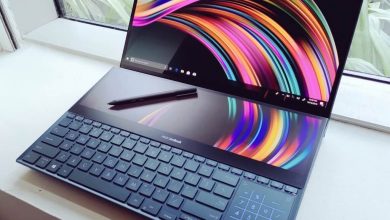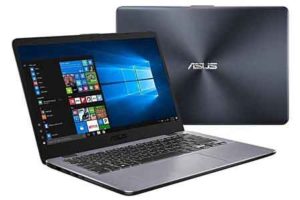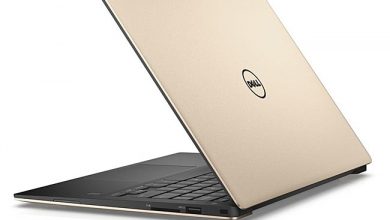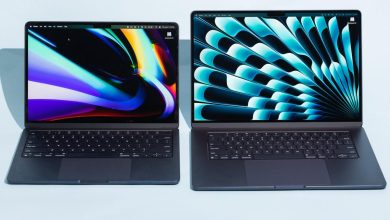MacBook Air Specification & Price In Nigeria

On Nov. 10, 2020, Apple held its “One More Thing” event in which it released information about the upcoming macOS 11 Big Sur and some of the new features of that OS. While exciting in its own right, that was not the star of the show. The spotlight was squarely on Apple’s showcase of three new devices using the newest creation: Apple Silicon, also known as Apple’s M1, a custom System-on-a-Chip (SoC) hardware.
Apple Silicon is the collection of processors, GPU, Secure Enclave, and other chipsets that make up the guts of a computer. Though we will eventually see it sweep through all of Apple’s computing product line, the new SoC has been fashioned into the first device, the MacBook Air.
The Air has all of the design features and portability that users have come to know and love since Apple first revealed the Air to the public. Similar to 2008, when the late Steve Jobs slipped the ultra-thin device out of the manilla envelope, this new internal redesign is set to usher in a new wave of performance, power efficiency, and usability that users have been wanting. Apple does this while pushing the technology envelope forward with the latest high-resolution Retina screen, Wi-Fi 6, Bluetooth 5.0, and USB 4 connectivity options, all thanks to Apple’s switch over to the new M1 chipset it has developed.
What are the new features of the latest MacBook Air?
Apple Silicon (M1)
The new M1 chip was designed by Apple for mobile devices that require a performance and power management balance to allow these devices to deliver top-of-the-line performance while sipping, not gulping, power, to last all day on a full charge.
The first-generation of the M1 chip included in the new MacBook Air packs an 8-core CPU, made up of 4 performance cores and 4 efficiency cores, which work in tandem to deliver performance over power for high-priority workloads; or favor power over performance for low-priority workloads. Additionally, a 7- or 8-core GPU—depending on the customization—delivers high-performance, discrete-level graphics on an integrated graphics power draw.
A 16-core Neural Engine helps users process machine learning (ML) tasks with aplomb. This is especially beneficial in workloads in big data, scientific studies, algorithms, and artificial intelligence (AI) to name a few.
Fanless
With such tight integration between all the components that make up the new MacBook Air, Apple has delivered the first ever for a laptop: No fans! Cooling fans, or active cooling, use small, high-RPM fans that spin to create airflow that cools down CPUs and GPUs when they start generating too much heat internally. Without this, the heat would build and potentially damage components. But not the new MacBook Air, as it runs so cool, even at peak performance levels, that the Air’s all-aluminum industrial design acts as a giant heat sink, or passive cooling, to keep the chips running optimally. This results in a quiet user experience without the loud, furious hum of the fans kicking in.
Retina display
Added to the new MacBook Air is Apple’s top-of-the-line 13.3″ LED-backlit Retina display with IPS screen technology that delivers beautiful, high-res images and utilizes the P3 color gamut supporting millions of colors at a native resolution of 2560×1600.
Battery
Battery life has also been a crucial point for laptops in general. After all, what good is a laptop that doesn’t allow you to complete your work because it won’t last more than a couple of hours? Luckily, that’s never been a problem for the Air product line, which typically boasts more than 10 hours on a full charge.
With the changeover to the new, tightly integrated M1 chipset, the new MacBook Air now delivers up to 18 hours of battery life on a full charge, whether you’re performing work-related tasks, surfing the web, or playing videos.
Instant on
Another benefit to the M1 chipset’s integration with all system components is its ability to power on or wake on instantly just by lifting the lid of the new MacBook Air. Similar to its iOS-based siblings that instantly wake up when pressing the home or power buttons, this instant-on technology just works, allowing users to shave precious seconds from their workflow each time they step away from their devices.
Connectivity
Connectivity options are important for users to interface with external peripherals, expand capacities, or otherwise extend the functionality of their devices, and the new MacBook Air has spared no expense in packing in the latest and greatest technology to make the most of the user’s experience.
USB4
Continuing its inclusion of the ubiquitous USB-C connector type, Apple has included the newest standard, USB4, which delivers up to a whopping 40Gbps in data transfer rates. This continues to be backward compatible with the previously released USB standards, so all your USB-enabled devices will still function as they always have.
Thunderbolt 3
The Thunderbolt protocol is found on many high-end, high-performing external devices that require a high-speed connectivity protocol to transfer data and power over one slim cable type. Devices like 4K (and up to 6K) monitors, RAID-enabled network attached storage (NAS) devices, and external GPU towers are just a few commonly associated with the blazing fast connection standard. Plus it’s backward compatible as well with older devices operating at the 10-20Gbps transfer rate.
What are the similarities between the MacBook Air and with M1 and Intel models?
While there are a few differences between the M1 and Intel models, below is a list of the core features that remain similar between both models.
- Accessibility features
- 3.5″mm headphone jack
- 3-mic array for video/voice conference calls
- Stereo speakers
- Support for VGA/HDMI/DVI connectors using adapters
- Support for 4/5/6K external monitors
- 720p FaceTime camera for video chats
- Bluetooth 5.0 wireless connectivity
- Built-in backlit Magic Keyboard and Trackpad
- Storage: up to 2TB of flash based SSD
- Connectors: 2 x USB-C
- Battery: 49.9-watt lithium-polymer
- Charging Adapter: 30w USB-C Power Adapter
- Dimensions: 11.97″ (W) x 8.36″ (D) x 0.16-0.63″ (H)
- Weight: 2.8lbs.
What are the differences between the MacBook Air M1 and Intel models?
There are several crucial differences between the M1 and Intel versions of the system. Below you will find a list of the differences between each of the core components of both models.
MacBook Air with the M1 chip:
- Apple Silicon (M1) chip with 8-core CPU, 8-core GPU, and 16-core Neural Engine
- Unified memory up to 16GB
- 802.11ax (Wi-Fi 6) with speeds up to 10Gbps
- USB4 with speeds up to 40Gbps
- Battery life up to 18 hours
- Fanless, quiet operation
MacBook Air, Intel version:
- Intel Core i3 2-core CPU and integrated graphics
- LPDDR4X memory up to 16GB
- 802.11ac (Wi-Fi 5) with speeds up to 1Gbps
- USB 3.1 Gen 2 with speeds up to 10Gbps
- Battery life up to 12 hours
- Fans, non-quiet operation
What are the main competitors to the new MacBook Air?
While there are a number of devices that fall into the ultrabook category, none of them uses a custom SoC designed by the device manufacturers. Instead, they all rely on Intel to provide processors that power their devices, so a direct comparison is not really possible. However, some of the leading devices in this class are displayed below.
Microsoft Surface Laptop 3: Starting at NGN600,000 and featuring an Intel Core i5 processor, 8GB of RAM, 128GB SSD, 13.5″ IPS screen with a resolution of 2256×1504, Intel Iris integrated graphics, 720p HD webcam, fingerprint reader, 802.11ac wireless, Bluetooth 5.0, and battery life of up to 11.5 hours.
Lenovo Yoga C940: Starting at NGN780,000 and featuring an Intel Core i5 processor, 8GB of RAM, 256GB SSD, 14″ IPS Full-HD screen, Intel Iris integrated graphics, 720p HD webcam, fingerprint reader, 802.11ac wireless, Bluetooth 5.0, active pen, and battery life of up to 11 hours.
Dell XPS 13: Starting at NGN650,000 and featuring an Intel Core i5 processor, 8GB of RAM, 256GB SSD, 13.3″ IPS Full-HD screen, Intel Iris integrated graphics, 720p HD webcam, fingerprint reader, 802.11ax wireless, Bluetooth 5.1, and battery life of up to 9 hours.
HP Spectre x360: Starting at NGN710,000 and featuring an Intel Core i7 processor, 8GB of RAM, 512GB SSD, 13.3″ IPS Full-HD screen, Intel Iris integrated graphics, 720p HD webcam, fingerprint reader, 802.11ax wireless, Bluetooth 5.1, active pen, and battery life of up to 9 hours.
How much does the new MacBook Air Price In Nigeria?
The entry-level pricing on the new MacBook Air remains the same as the previous models’ cost: NGN680,000 for retail and NGN620,000 for educational customers. There are a number of options available on this model that could raise the price, such as upgrading the memory and SSD, or pre-installing Apple’s Pro-level software packages: Final Cut Pro X and Logic Pro X.
RAM: 16GB: $200
SSD: 512GB: $200
SSD: 1TB: $400
SSD: 2TB: $800
APP: Logic Pro X: $200
APP: Final Cut Pro X: $300
Additionally, the AppleCare+ for Mac extended warranty, which is optional, upgrades the standard one-year warranty to three-year and includes accidental damage protection to cover against drops and breaks, as well as including Apple’s 24/7 technical support. This can be added during checkout for $249.
When and where will the new MacBook Air be available?
The new MacBook Air will be available next week for in-store purchases through third-party vendors, as Apple Stores globally have been closed due to the ongoing pandemic. However, those who wish to pre-order the new device can do so directly from Apple’s online store, as of Nov. 10.




